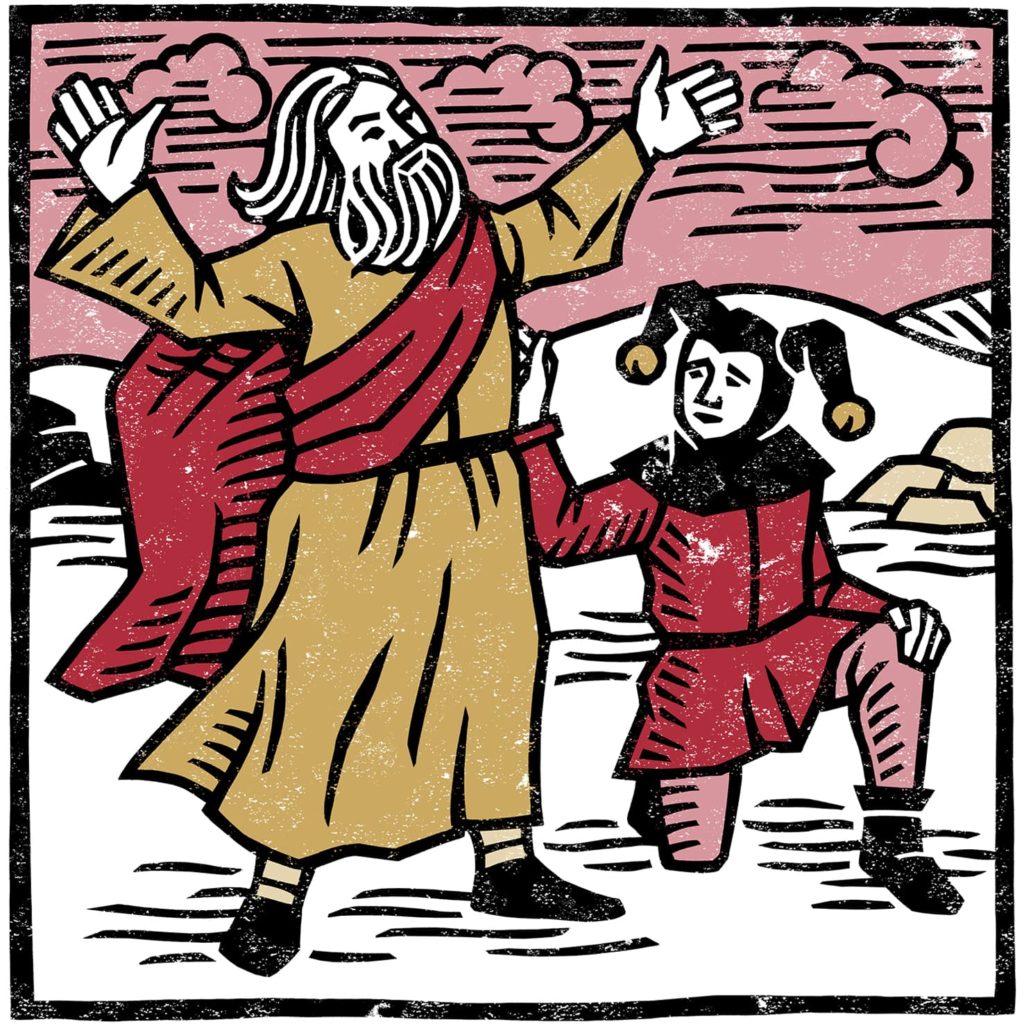Language in the play was influenced by Samuel Harsnett’s A Declaration of Egregious Popish Impostures, and an English translation of Michel de Montaigne’s Essays, both from 1603. An anonymous play about ‘King Leir’ was printed in 1605, and may have influenced Shakespeare. The play was performed by the King’s Men at Whitehall Palace on 26th December 1606. It is usually dated to 1605–1606, with revisions made later.
The play was first printed as a quarto in 1608, probably typeset from Shakespeare’s draft manuscripts, or a transcript of them. A second quarto in 1619 was typeset from the first. The First Folio version was typeset possibly from a transcript of an annotated second quarto: it cuts about 300 lines from the quarto version, but also adds 100 other lines, and there are structural differences. There are effectively two distinct plays: the quarto, as Shakespeare originally wrote it, and the folio, as he later revised it.

‘Blow, winds, and crack your cheeks! Rage! Blow!
You cataracts and hurricanoes spout
Till you have drenched our steeples, drowned the cocks!’
King Lear, III ii
Brief synopsis of the play
Rashly and foolishly, old King Lear decides to divide his kingdom between his three daughters according to how much they love him: Goneril and Regan declare their love fulsomely, but Cordelia refuses to flatter him, and he banishes her to France. Lear realises his personal and political folly too late and he declines into madness, but, amidst his anguished psychological struggle, there are touching moments of humour, self-awareness, and optimism for humanity.



